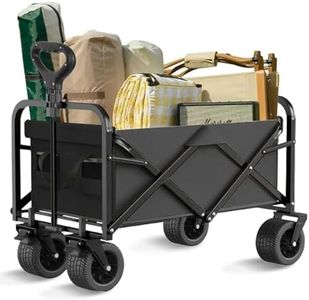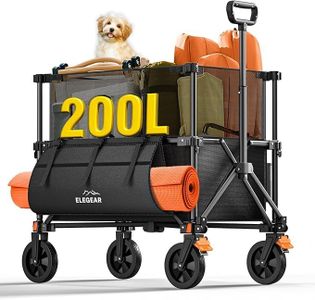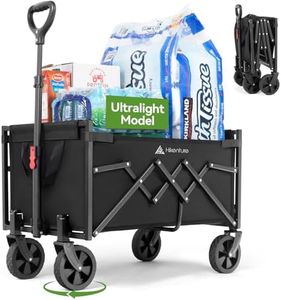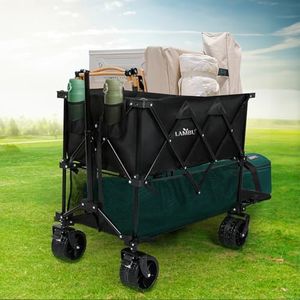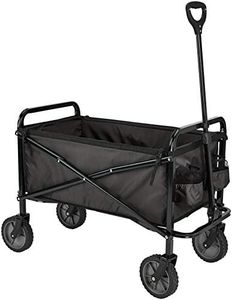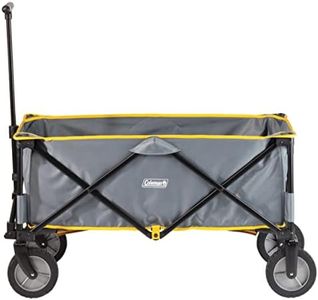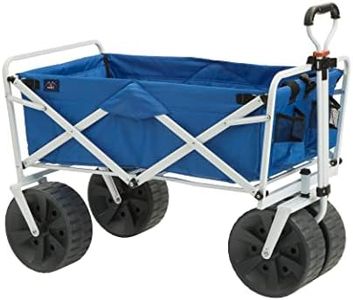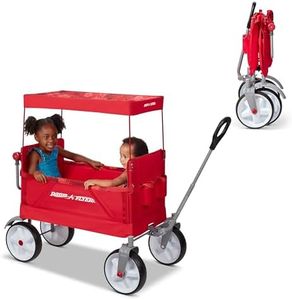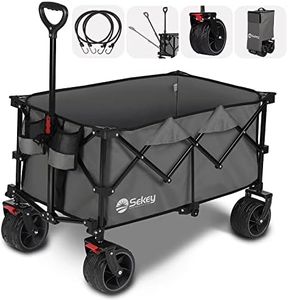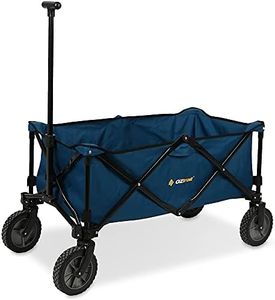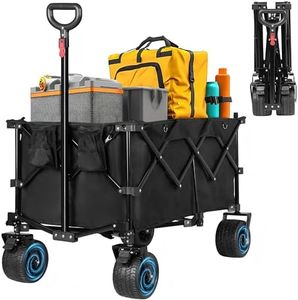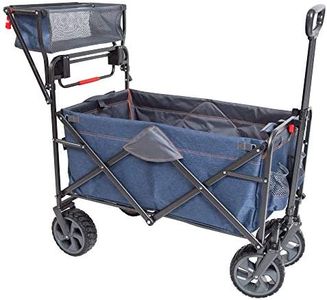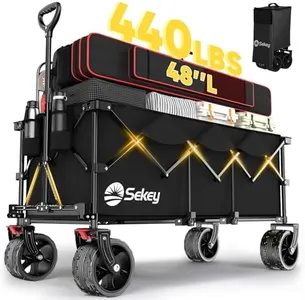We Use CookiesWe use cookies to enhance the security, performance,
functionality and for analytical and promotional activities. By continuing to browse this site you
are agreeing to our privacy policy
10 Best Collapsible Wagons
From leading brands and best sellers available on the web.Buying Guide for the Best Collapsible Wagons
When choosing a collapsible wagon, it's wise to think about how you'll use it—whether it's for hauling beach gear, camping equipment, groceries, or kids. The right choice comes from matching features to your needs. Consider how much you'll need to carry, where you'll be using the wagon, and how easily you want it to fold and store. Don't rush; check user reviews for insights and if possible, try handling one in person.Weight CapacityWeight capacity tells you how much weight the wagon can safely carry. This matters because overloading a wagon can break it or make it hard to pull. You’ll often see wagons rated between 100 to 300 pounds. If you're mostly hauling lightweight items like towels or drinks, you can opt for a lower range. For beach trips with coolers or carrying children, higher capacity is better. Always keep your own usage in mind—pick a capacity that matches what you'll actually put inside the wagon most often.
Wheel Type and SizeThe wheels on a collapsible wagon are crucial because they determine where you can use it easily. Smaller, hard plastic wheels are fine for smooth, paved surfaces but struggle on sand, gravel, or grass. Larger, wide, or treaded wheels are better for beaches, parks, or rougher terrain. If you’re mostly using the wagon on sidewalks or indoors, small wheels are adequate. If you expect to pull your wagon over sand or through a park, prioritize larger, more rugged wheels for an easier experience.
Folding Mechanism and Size when FoldedHow the wagon folds up affects both how easy it is to carry around and how much space it takes for storage. Some wagons collapse into a slim shape, making them easy to fit in a closet, trunk, or even a crowded garage, while others are bulkier. Look for one with a folding mechanism you find simple and manageable. If you have limited storage or plan to travel with your wagon, prioritize models that have the most compact folded size.
Handle Design and LengthThe handle is what you’ll be using to pull or push the wagon, so its comfort and adjustability are important. Handles come in different shapes—some are straight, some are curved, some are telescoping (extendable). A longer or adjustable handle is useful if different people of varying heights will use the wagon. If you’ll be hauling heavy loads or using your wagon for long walks, look for a padded or ergonomic handle that suits your grip style.
Frame and Fabric MaterialThe frame and the fabric affect both the wagon’s durability and its weight. Common frame materials include steel and aluminum; steel is strong but heavier, while aluminum is lighter but may not support as much weight. Fabrics like polyester are common—look for ones that are UV-resistant or waterproof if you'll use the wagon outdoors a lot. Think about your priorities: If you need to carry heavier items, stick with sturdier materials. If you’ll often move the wagon in and out of your car, consider a lighter build for easier lifting.
Extra Features (Canopies, Pockets, Cup Holders)Many wagons offer extra features and accessories. Canopies protect your cargo (or kids) from the sun, mesh pockets help keep small items organized, and cup holders add convenience. Think about what will make your outings more comfortable—if you’ll be out in the sun or want to keep drinks handy, these extras might be important. If you just need basic cargo hauling, you don’t need to prioritize these add-ons.
